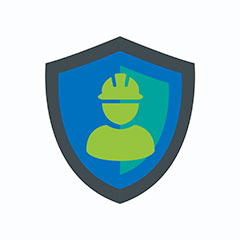Historically, the tank's main gun is generally fired by 'direct fire', in which its weapons were aimed through simple optical sights and laid onto target by hand, with windage estimated or assisted with a reticle (markings in the gun sight which are aligned to frame an object of known size, in this case a tank) to estimate the range to the target.
- Visitors can check out the Forum FAQ by clicking this link. You have to register before you can post: click the REGISTER link above to proceed. To start viewing messages, select the forum that you want to visit from the selection below. View our Forum Privacy Policy.
- Want to receive the latest contracting news and advice straight to your inbox? Sign up to the ContractorUK newsletter here. Every sign up will also be entered into a draw to WIN £100 Amazon vouchers!
test please delete
Collapse
This is a sticky topic.
X
X
Collapse
-
-
Comment
-
Consequently, accuracy was limited at long range and concurrent movement and accurate shooting were largely impossible. Over time these sights were replaced with stereoscopic rangefinders, and later by laser range-finders. Direct fire contrasts with the 'indirect fire' mostly used by the artillery, in which artillerymen seldom, if ever, see their target.How fortunate for governments that the people they administer don't thinkComment
-
Comment
-
If you don't move your lips you can read fasterOriginally posted by DS23 View Postbut surely everyone else thought that too....
Comment
-
Most modern main battle tanks in the armies of industrialised countries still utilize "direct fire", but deploy laser range-finders. However, some optical and reticule range-finders are still in use in older and less sophisticated vehicles.How fortunate for governments that the people they administer don't thinkComment
-
Comment
-
told you! gar... if only you had asked my advice at the time...Originally posted by TheFaQQer View PostOther people had had the same idea!Comment
-
Modern tanks have a variety of sophisticated systems to make them more accurate. Gyroscopes are used to stabilise the main weapon; computers calculate the appropriate elevation and aim-point, taking input from sensors for wind speed, air temperature, humidity, the gun-barrel temperature, warping and wear, the speed of the target (calculated by taking at least two sightings of the target with the range-finder), and the movement of the tank. Infrared, light-amplification, or thermal night vision equipment is also commonly incorporated. Laser target designators may also be used to illuminate targets for guided munitions. As a result modern tanks can fire with reasonable accuracy while on the move.How fortunate for governments that the people they administer don't thinkComment
-
Comment
- Home
- News & Features
- First Timers
- IR35 / S660 / BN66
- Employee Benefit Trusts
- Agency Workers Regulations
- MSC Legislation
- Limited Companies
- Dividends
- Umbrella Company
- VAT / Flat Rate VAT
- Job News & Guides
- Money News & Guides
- Guide to Contracts
- Successful Contracting
- Contracting Overseas
- Contractor Calculators
- MVL
- Contractor Expenses
Advertisers
Contractor Services
CUK News
- How salary sacrifice pension changes will hit contractors Dec 24 07:48
- All the big IR35/employment status cases of 2025: ranked Dec 23 08:55
- Why IT contractors are (understandably) fed up with recruitment agencies Dec 22 13:57
- Contractors, don’t fall foul of HMRC’s expenses rules this Christmas party season Dec 19 09:55
- A delay to the employment status consultation isn’t why an IR35 fix looks further out of reach Dec 18 08:22
- How asking a tech jobs agency basic questions got one IT contractor withdrawn Dec 17 07:21
- Are Home Office immigration policies sacrificing IT contractors for ‘cheap labour’? Dec 16 07:48
- Will 2026 see the return of the ‘Outside IR35’ contractor? Dec 15 07:51
- Contractors, Reeves’ dividends raid is disastrous. Act, but without acceptance Dec 12 07:10
- Why JSL indemnity clauses putting umbrella contractors on the hook could be a PR disaster Dec 11 07:36





Comment